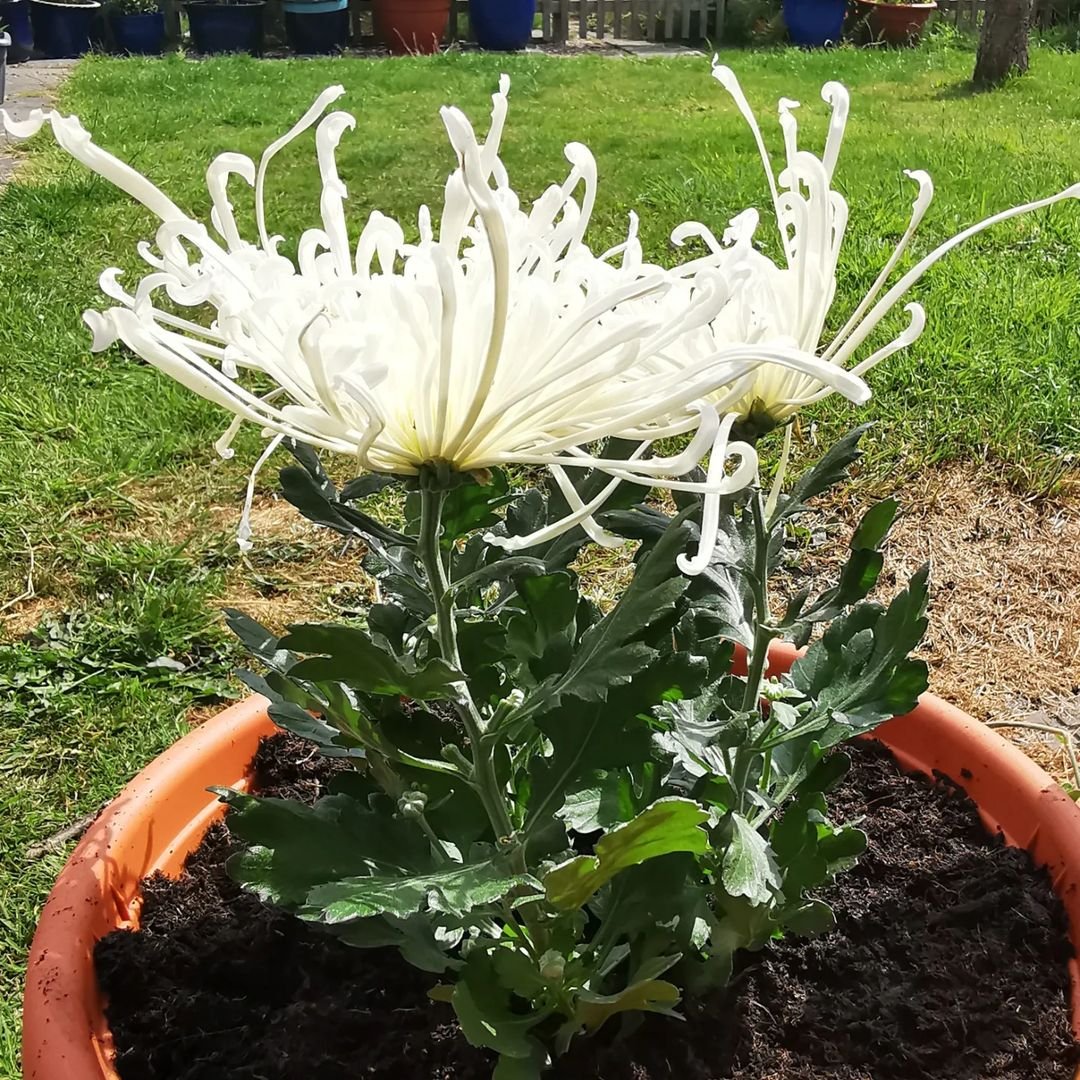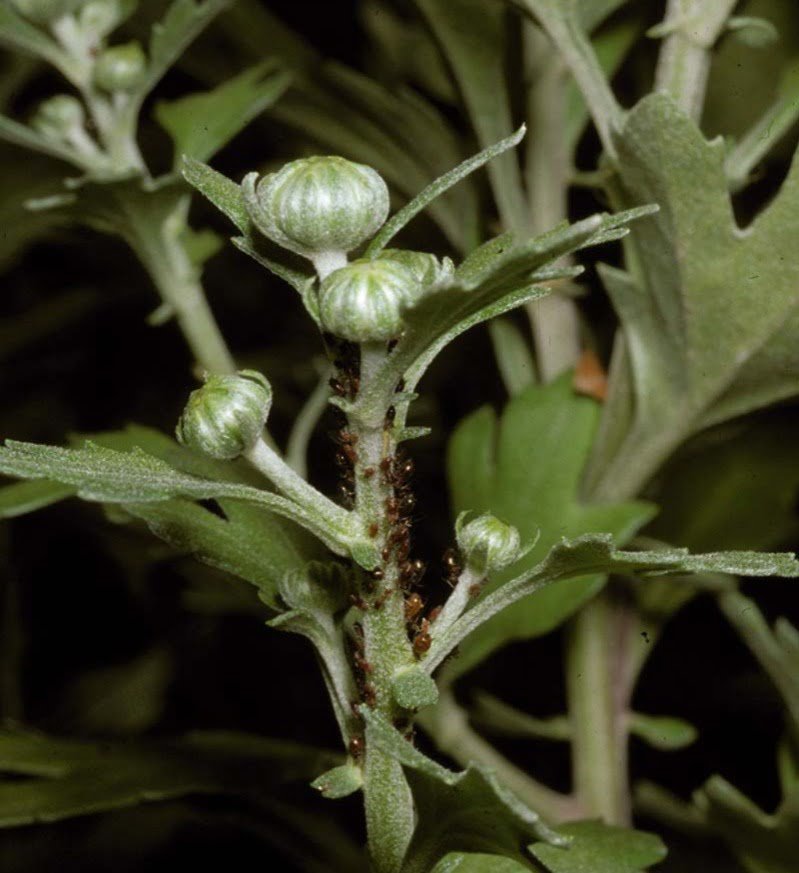Discover the ultimate guide to growing and caring for Fuji Mums. Learn essential tips for planting, watering and maintaining these stunning blooms.
Fuji mums, also known as Chrysanthemum x morifolium, are beautiful flowers that can add color and life to any garden. These stunning blooms are popular for their large, showy flowers and come in various colors. In this guide, we’ll walk you through everything you need to know about growing and caring for Fuji mums.
Here’s a short information overview:
| Aspect | Information |
|---|---|
| Botanical Name | Chrysanthemum × morifolium ‘Fuji’ |
| Common Name | Fuji Mums |
| Appearance | Large, decorative flowers with multiple layers of petals; available in various colors including white, yellow, pink and burgundy |
| Leaf Shape | Lobed, serrated edges |
| Plant Type | Perennial (often grown as annuals in colder climates) |
| Zones | USDA Zones 5-9 |
| Sun Exposure | Full sun |
| Soil Type | Well-drained, fertile soil |
| Watering | Regular; keep soil evenly moist |
| Fertilization | Regular feeding during growing season |
| Growth Habit | Upright, bushy |
| Height/Spread | 1-3 feet tall, spreads 1-2 feet |
| Pests | Susceptible to aphids and spider mites |
| Special Features | Long-lasting cut flowers; popular in floral arrangements and gardens |
What are Fuji Mums?

Fuji mums are a type of chrysanthemum that originated in Japan. They’re known for their big, fluffy flowers that can grow up to 6 inches wide. These plants are part of the Asteraceae family and are loved by gardeners for their long blooming period and eye-catching appearance.
Why Grow Fuji Mums?
There are many reasons to add Fuji mums to your garden:
- Beautiful flowers: The large, colorful blooms are sure to catch everyone’s eye.
- Long-lasting: Fuji mums bloom for several weeks in the fall.
- Variety of colors: You can find Fuji mums in white, yellow, pink, purple and many other shades.
- Low maintenance: Once established, these plants are relatively easy to care for.
- Attract pollinators: Bees and butterflies love Fuji mums.
How to Plant Fuji Mums
Choosing the Right Location
Fuji mums love full sun, so pick a spot in your garden that gets at least 6 hours of direct sunlight each day. They also need well-draining soil to thrive.
Best Time to Plant
The best time to plant Fuji mums is in the spring after the last frost or in early fall. This gives the plants time to establish their roots before the extreme temperatures of summer or winter.
Planting Steps
- Dig a hole twice as wide as the plant’s root ball and just as deep.
- Place the plant in the hole, making sure it’s at the same depth it was in its container.
- Fill in the hole with soil, pressing gently to remove air pockets.
- Water thoroughly after planting.
For more detailed planting instructions, check out this guide from the University of Minnesota Extension.
Caring for Fuji Mums

Watering
Fuji mums need regular watering, especially when they’re first planted. Water deeply once or twice a week, depending on rainfall. The soil should be moist but not waterlogged. Proper watering is key to healthy plants.
Fertilizing
Feed your Fuji mums with a balanced, water-soluble fertilizer every 2-3 weeks during the growing season. Stop fertilizing about a month before the first expected frost in your area.
Pruning and Pinching
Pinching is an important part of growing Fuji mums. This process encourages bushier growth and more flowers. Here’s how to do it:
- When the plants are about 6 inches tall, pinch off the top inch of each stem.
- Continue pinching every 2-3 weeks until mid-summer.
- Stop pinching by July to allow flower buds to form.
Learn more about pruning techniques from the University of Maryland Extension.
Overwintering
In colder areas, Fuji mums might need some extra care to survive the winter:
- After the first hard frost, cut the plants back to about 6 inches tall.
- Apply a thick layer of mulch around the base of the plant.
- In spring, remove the mulch gradually as the weather warms up.
Common Pests and Diseases

While Fuji mums are generally hardy, they can face some challenges:
- Aphids: These tiny pests can be controlled with insecticidal soap or a strong spray of water.
- Powdery mildew: Improve air circulation and avoid overhead watering to prevent this fungal disease.
- Root rot: Ensure good drainage to prevent this problem.
Propagating Fuji Mums
You can easily grow more Fuji mums through division:
- In spring, dig up the entire plant.
- Gently separate the root ball into smaller sections, each with several stems.
- Replant these divisions in new spots in your garden.
Using Fuji Mums in Your Landscape

Fuji mums are versatile plants that can be used in many ways:
- Flower beds: Plant them in groups for a stunning fall display.
- Container gardens: They make excellent potted plants for patios or balconies.
- Cut flowers: Fuji mums are great for fall bouquets and arrangements.
- Borders: Use them to line walkways or garden edges.
For more landscaping ideas, visit the Clemson Cooperative Extension.
Frequently Asked Questions
How tall do Fuji mums grow?
Fuji mums typically grow 2-3 feet tall and wide.
How long do Fuji mums bloom?
They usually bloom for 4-6 weeks in the fall.
Are Fuji mums perennials?
Yes, they’re perennials in USDA zones 5-9.
Can I grow Fuji mums indoors?
While they prefer outdoor conditions, you can grow them in pots indoors with proper care and plenty of light.
How do I change the color of my Fuji mums?
The color is determined by genetics, so you can’t change it. Choose plants with your desired color when buying.
Growing Fuji mums can be a rewarding experience for any gardener. With their stunning blooms and relatively easy care, these plants are sure to become a favorite in your garden. Remember to provide them with plenty of sunlight, regular water and a bit of care throughout the seasons. By following the tips in this guide, you’ll be well on your way to enjoying beautiful Fuji mums year after year.
For more information on growing chrysanthemums, check out this resource from North Carolina State Extension.